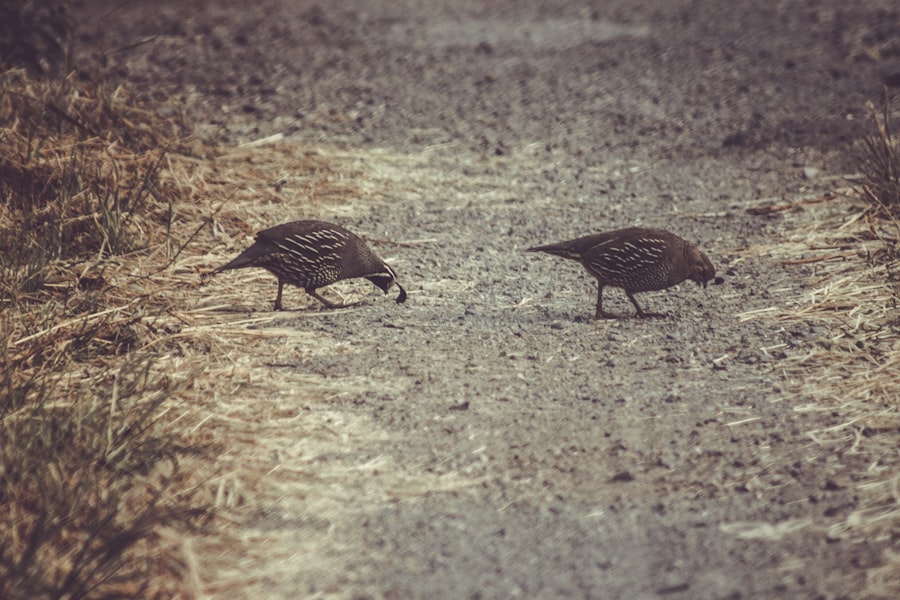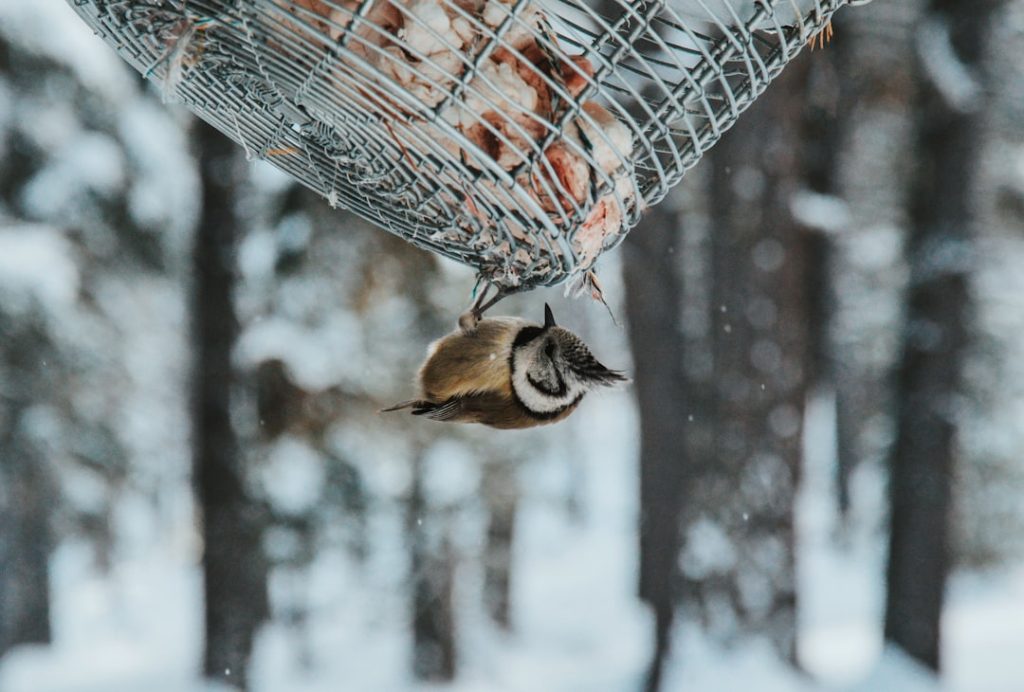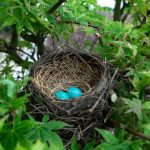Quail breeding cages play a crucial role in the successful breeding and rearing of quails. These cages provide a controlled environment for quails to lay eggs, incubate them, and raise their chicks. By using breeding cages, quail breeders can ensure the safety and well-being of their birds, as well as maximize the productivity of their breeding operations.
Breeding cages also help to prevent overcrowding and aggression among quails, which can occur when they are kept in a confined space without proper separation. Additionally, breeding cages make it easier for breeders to monitor the health and behavior of individual quails, as well as collect eggs and clean the environment. Overall, the use of breeding cages is essential for maintaining a healthy and efficient quail breeding operation.
Quail breeding cages are also important for preserving and improving the genetics of quail populations. By selectively breeding quails in controlled environments, breeders can work towards developing desirable traits such as egg production, meat quality, and disease resistance. This is particularly important for sustaining the quail farming industry and meeting the demand for quail products in Australia. Without proper breeding cages, it would be challenging to manage and improve the genetic diversity of quails, which is essential for the long-term sustainability of the industry.
Table of Contents
- 1 Types of Quail Breeding Cages Available in Australia
- 2 Setting Up a Quail Breeding Cage
- 3 Maintaining Quail Breeding Cages in Australia
- 4 Tips for Successful Quail Breeding in Cages
- 5 Common Mistakes to Avoid in Quail Breeding Cages
- 6 Legal Considerations for Quail Breeding in Australia
- 7 FAQs
- 7.1 What are quail breeding cages?
- 7.2 What are the benefits of using quail breeding cages?
- 7.3 What should be considered when choosing quail breeding cages in Australia?
- 7.4 How should quail breeding cages be set up and maintained?
- 7.5 Are there specific regulations for quail breeding cages in Australia?
Key Takeaways
- Quail breeding cages are important for providing a controlled environment for breeding and raising quail.
- Types of quail breeding cages available in Australia include wire cages, plastic cages, and wooden cages.
- Setting up a quail breeding cage involves providing proper bedding, nesting areas, and access to food and water.
- Maintaining quail breeding cages in Australia requires regular cleaning, monitoring of temperature and humidity, and providing proper ventilation.
- Tips for successful quail breeding in cages include selecting healthy breeding stock, providing a balanced diet, and monitoring for signs of illness or stress.
Types of Quail Breeding Cages Available in Australia
In Australia, there are several types of quail breeding cages available to suit the needs of different breeders and breeding operations. One common type is the wire mesh cage, which provides good ventilation and visibility while keeping the quails contained. These cages are typically stackable, making them suitable for small-scale and commercial breeding operations. Wire mesh cages are also easy to clean and maintain, which is important for preventing the spread of diseases among quails.
Another type of quail breeding cage is the plastic or PVC cage, which is lightweight and easy to assemble. These cages are often used for temporary housing or for transporting quails, as they can be quickly set up and taken down as needed. Plastic cages are also durable and resistant to corrosion, making them a practical choice for outdoor use in Australian climates.
For larger breeding operations, there are also multi-level or tiered cages available, which maximize space efficiency and allow for a higher density of quails to be housed. These cages are often made of galvanized steel or aluminum, providing durability and strength to support multiple levels of quail housing. Multi-level cages are ideal for commercial quail breeding facilities that need to maximize their production capacity within a limited space.
Setting Up a Quail Breeding Cage
When setting up a quail breeding cage, there are several important factors to consider to ensure the comfort and well-being of the quails. Firstly, it is essential to provide enough space for each quail to move around comfortably and exhibit natural behaviors such as dust bathing and perching. The size of the cage will depend on the breed and size of the quails, as well as the number of birds being housed.
The cage should also be equipped with appropriate nesting boxes or areas for the quails to lay their eggs and incubate them. These nesting areas should be secluded and provide a sense of security for the quails to encourage successful breeding. Additionally, the cage should have a solid floor or wire mesh bottom to prevent injury to the quails’ feet and allow for easy cleaning.
Proper ventilation is crucial in a quail breeding cage to maintain air quality and prevent heat stress, especially in the hot Australian climate. The cage should be positioned in a well-ventilated area with access to natural light but protected from extreme weather conditions. Adequate lighting should also be provided to maintain a consistent day-night cycle for the quails, which is important for their reproductive health.
Maintaining Quail Breeding Cages in Australia
Maintaining quail breeding cages is essential for ensuring the health and productivity of the quails. Regular cleaning and sanitation of the cages are crucial to prevent the spread of diseases and parasites among the birds. This includes removing soiled bedding, droppings, and leftover food daily, as well as disinfecting the cage periodically with safe and effective cleaning agents.
The nesting areas should be checked regularly for cleanliness and replaced with fresh bedding as needed to provide a hygienic environment for egg laying and incubation. It is also important to inspect the cage structure for any signs of wear or damage, such as rust or corrosion in metal cages, and repair or replace any compromised parts to maintain the integrity of the cage.
In addition to physical maintenance, it is important to monitor the health and behavior of the quails housed in the breeding cages. This includes observing their eating and drinking habits, egg production, and any signs of illness or injury. Any sick or injured quails should be promptly removed from the breeding cage for treatment to prevent the spread of disease and ensure the welfare of the birds.
Tips for Successful Quail Breeding in Cages
To ensure successful quail breeding in cages, there are several tips that breeders can follow to optimize their breeding operations. Firstly, it is important to provide a balanced diet for the quails that meets their nutritional needs for egg production and overall health. This may include commercial quail feed supplemented with fresh greens, grains, and protein sources such as mealworms or crickets.
Maintaining a consistent lighting schedule is also important for stimulating egg production in quails. Providing 14-16 hours of light per day can help to encourage regular laying cycles in female quails, especially during the shorter daylight hours in winter. This can be achieved using artificial lighting in addition to natural light to ensure a consistent day-night cycle for the birds.
Another tip for successful quail breeding is to carefully monitor the ratio of male to female quails in the breeding cage. An appropriate ratio is typically one male to every three to five females to prevent overbreeding and aggression among the birds. This can help to maintain a harmonious social environment within the cage and reduce stress on the quails.
Common Mistakes to Avoid in Quail Breeding Cages

While breeding quails in cages can be a rewarding endeavor, there are several common mistakes that breeders should avoid to ensure the success of their operations. One common mistake is overcrowding the breeding cages, which can lead to stress, aggression, and reduced egg production among the quails. It is important to provide enough space for each bird to move around comfortably and exhibit natural behaviors without feeling crowded.
Another mistake is neglecting proper ventilation in the breeding cages, which can lead to heat stress and respiratory problems in quails, especially during hot weather. Adequate airflow should be maintained within the cage while protecting the birds from drafts and extreme temperatures. This can be achieved through proper cage design and positioning in a well-ventilated area.
Failing to provide adequate nesting areas for the quails is another common mistake that can hinder successful breeding. Quails require secluded and secure spaces to lay their eggs and incubate them without disturbance. Without proper nesting areas, quails may become stressed and exhibit poor reproductive behavior, leading to reduced egg production.
Legal Considerations for Quail Breeding in Australia
In Australia, there are legal considerations that quail breeders must be aware of when setting up and maintaining breeding cages. Depending on the scale of their operations, breeders may need to obtain permits or licenses from local authorities or agricultural departments to breed and sell quails commercially. This may involve compliance with regulations related to animal welfare, biosecurity, and food safety standards.
Breeders should also be aware of any restrictions on importing or exporting quails or their eggs, as well as regulations related to disease control and vaccination requirements for poultry in Australia. It is important to stay informed about any changes in legislation or industry standards that may affect quail breeding practices and ensure compliance with all relevant laws and regulations.
Additionally, breeders should consider ethical considerations related to animal welfare when breeding quails in cages. This includes providing appropriate housing, nutrition, and veterinary care for the birds, as well as ensuring that they are not subjected to unnecessary stress or suffering during breeding operations. By adhering to legal and ethical standards, quail breeders can contribute to the sustainable development of the industry while upholding high standards of animal care and welfare.
In conclusion, quail breeding cages play a vital role in maintaining healthy and productive quail populations in Australia. By selecting suitable cage types, setting up appropriate environments, maintaining cleanliness, following best practices, avoiding common mistakes, and adhering to legal considerations, breeders can ensure successful quail breeding operations while upholding high standards of animal welfare and industry compliance.
If you’re interested in quail breeding cages in Australia, you might also want to consider the design and setup of a large chicken coop. Poultry Wizard offers some great ideas for large chicken coop designs that could be adapted for quail breeding cages. Check out their article on large chicken coop ideas to get inspiration for creating a spacious and functional environment for your quails.
FAQs
What are quail breeding cages?
Quail breeding cages are specially designed enclosures used for housing and breeding quail. These cages are typically equipped with features that provide a suitable environment for quail to lay eggs, incubate them, and rear their young.
What are the benefits of using quail breeding cages?
Quail breeding cages offer several benefits, including efficient use of space, ease of management, and the ability to control breeding conditions. They also help protect quail from predators and provide a clean and hygienic environment for breeding.
What should be considered when choosing quail breeding cages in Australia?
When choosing quail breeding cages in Australia, factors such as cage size, material, ventilation, and ease of cleaning should be considered. It is also important to ensure that the cages comply with local regulations and standards for animal welfare.
How should quail breeding cages be set up and maintained?
Quail breeding cages should be set up in a well-ventilated area with access to natural light. The cages should be regularly cleaned and sanitized to prevent the buildup of waste and bacteria. Additionally, proper temperature and humidity levels should be maintained to ensure the health and productivity of the quail.
Are there specific regulations for quail breeding cages in Australia?
In Australia, regulations for quail breeding cages may vary by state or territory. It is important to check with local authorities or agricultural agencies to ensure compliance with any relevant regulations or guidelines for quail breeding and housing.
Meet Walter, the feathered-friend fanatic of Florida! Nestled in the sunshine state, Walter struts through life with his feathered companions, clucking his way to happiness. With a coop that’s fancier than a five-star hotel, he’s the Don Juan of the chicken world. When he’s not teaching his hens to do the cha-cha, you’ll find him in a heated debate with his prized rooster, Sir Clucks-a-Lot. Walter’s poultry passion is no yolk; he’s the sunny-side-up guy you never knew you needed in your flock of friends!







